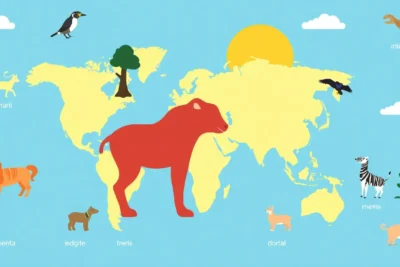
The Paradox of Eden
hace 1 año · Actualizado hace 1 año
Este test de nivel C1 está diseñado para estudiantes que buscan perfeccionar su comprensión lectora a través de una narrativa envolvente y desafiante. Consta de 25 preguntas que pondrán a prueba tu habilidad para interpretar ideas complejas, analizar a fondo personajes y captar matices esenciales en el texto.
Acceder a más Test de Inglés Gratuitos
Historia
In the year 2153, Earth was a shadow of its former self. Climate change, overpopulation, and resource depletion had forced humanity to seek refuge among the stars. The most ambitious project, known as Eden Genesis, was an effort to terraform an exoplanet called Kepler-452b. It was humanity's greatest hope for survival, but also its greatest gamble.
Dr. Elena Voss, a biologist and expert in ecological systems, was among the leading scientists chosen to oversee Eden Genesis. She had spent years studying Earth's collapse, and her work had inspired the design of biospheres capable of supporting life on barren worlds. When she first saw Kepler-452b through the observation window of the interstellar vessel Solace, she was struck by its beauty. The planet’s surface shimmered with blue-green hues, and its atmosphere was rich with potential.
“Dr. Voss,” called Commander Elias Hart, the mission leader, “we’ve arrived at the deployment site. The team is ready.”
Elena nodded, her mind racing with calculations and projections. Eden Genesis relied on a revolutionary process called Bio-Accelerated Terraforming (BAT). The concept was simple yet groundbreaking: introduce genetically modified microorganisms capable of transforming the planet's barren soil into fertile ground, releasing oxygen and stabilizing the climate in decades instead of millennia.
The team began the deployment, releasing pods filled with the microorganisms into Kepler’s atmosphere. The pods spread like seeds, carried by the wind, settling into the soil. Within weeks, green algae spread across the surface, producing oxygen. Small plants followed, and the atmosphere began to change. By the mission's second year, Kepler-452b resembled a verdant Eden.
However, as the ecosystem flourished, so did anomalies. Strange, glowing fungi emerged in unexpected places, spreading rapidly and choking native vegetation. The team dubbed the phenomenon “The Glow.” At first, they believed it to be a harmless mutation. But soon, the fungi began to release spores that disrupted the oxygen balance.
“Elena,” Commander Hart said during an emergency meeting, “The Glow is accelerating. If we don’t act, it could destabilize everything we’ve built.”
Elena analyzed samples of the fungi in her lab, uncovering a chilling truth. The Glow was not a mutation; it was a defensive response from Kepler’s dormant microbial life. The planet was fighting back, resisting the artificial ecosystem imposed upon it.
“This isn’t terraforming,” Elena said during the next meeting. “It’s biological warfare. The microorganisms we introduced are triggering a reaction from the planet’s native microbiota.”
Hart frowned. “What are our options?”
“We could attempt to isolate The Glow,” Elena suggested, “but it’s adaptive. The more we suppress it, the more it evolves. We’re in uncharted territory.”
As the weeks passed, tensions rose among the crew. Arguments erupted over the ethics of continuing the project versus abandoning it. Hart leaned heavily on Elena’s expertise, but she felt the weight of their collective survival on her shoulders.
One night, unable to sleep, Elena ventured into the heart of the forest they had created. She carried a small recorder, speaking her thoughts aloud. “We came here believing we could reshape this world in our image. But perhaps we misunderstood our role. Nature isn’t something to conquer—it’s a dialogue.”
In the clearing, she discovered a peculiar sight: a grove of trees intertwined with the glowing fungi, thriving together. She realized The Glow wasn’t entirely hostile—it was seeking equilibrium.
The next day, Elena proposed a radical idea: instead of eradicating The Glow, they should work with it, adapting their biospheres to coexist with Kepler’s native life. The team was divided. Many saw it as a dangerous gamble, but Hart trusted her instincts.
The process was slow and fraught with setbacks, but gradually, the team integrated Kepler’s microbial life into the terraforming model. The Glow began to stabilize, merging with the introduced ecosystem. The air became richer, the soil more fertile, and the planet’s climate steadied.
By the end of the mission’s fifth year, Kepler-452b had transformed into a thriving hybrid world, a testament to humanity’s ability to learn and adapt.
As the Solace prepared for its return to Earth, Elena recorded her final entry: “Eden was never meant to be imposed. It was always meant to be discovered, nurtured, and shared. In the paradox of creating life, we found our own humility.”
The Paradox of Eden became a cornerstone of humanity’s future explorations, a story of cooperation over domination, and a reminder that even in the vastness of the cosmos, harmony begins with understanding.
Preguntas
Si quieres conocer otros artículos parecidos a The Paradox of Eden puedes visitar todos nuestros artículos de C1.
Deja una respuesta


Artículos que te pueden interesar